
There is a deep love for cool plants on this blog and to be honest it feels incomplete without mentioning Coryline fruticosa, also known as Hawaiian Ti. Like hold up, look at these leaves.
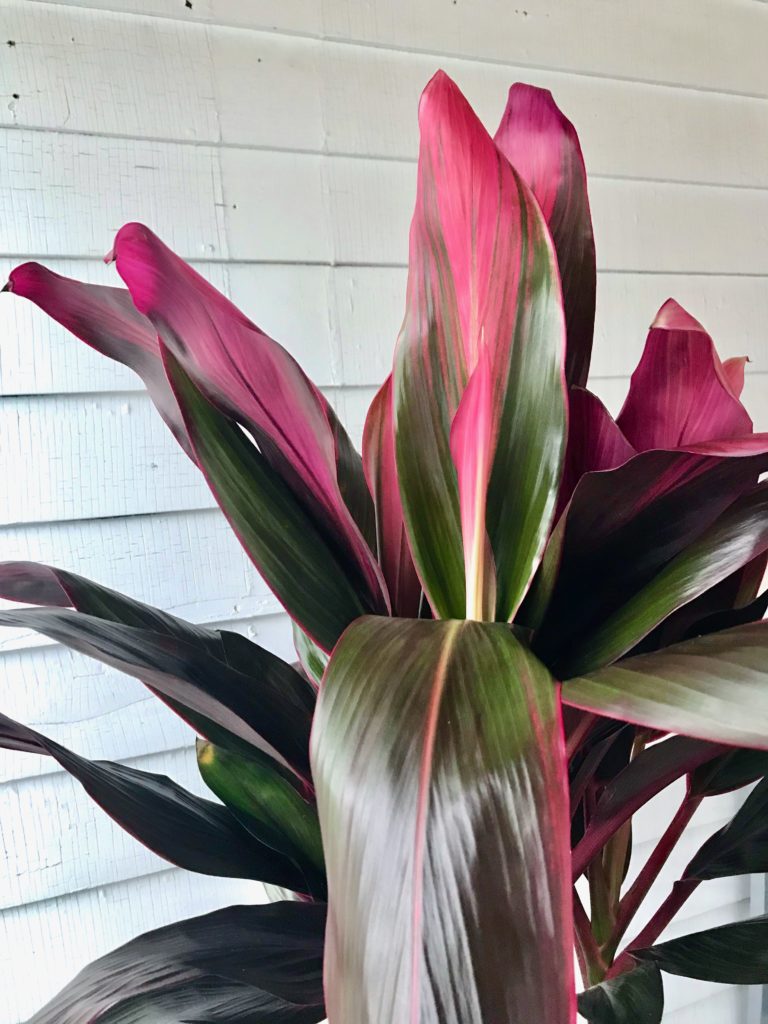
I have been on a search for pink plants so I’m just going to say it and I know it’s an unpopular option: I don’t like Pink Princess philodendrons. I think they look fleshy, grow weird, and are generally overrated, much like many humans. This aversion has lead me to find a pink plant that wasn’t a Pink Princess. Hawaiian Ti’s look like they should be in a resort in Cancun, are beautifully pink, not fleshy, and grow pretty normal. I found this guy for $10 and I couldn’t walk away without bringing this him home. His name is Hugo.
Are Hawaiian Ti Toxic to Pets?
A somewhat unpopular plant right now (you all wait), Hawaiian Ti plants are beautiful and do great in homes. As the name suggests, they’re native to Hawaii and care is actually similar to Calathea. First though, I know you’re all wondering: are Hawaiian Ti safe for cats and dogs? No, they are unfortunately toxic to pets.
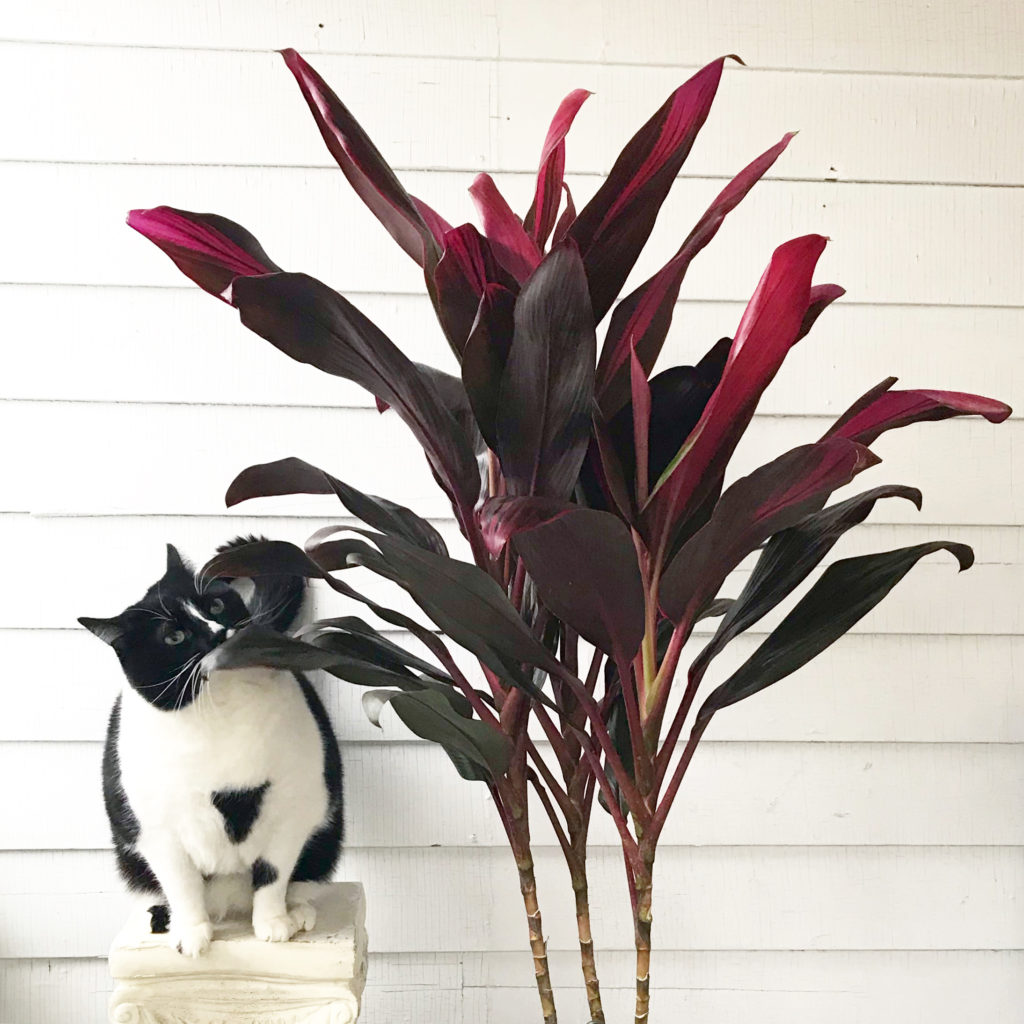
Oh no, I know. But if you have read any other my other posts about large toxic plants that I own, you know that I’m crafty with toxic plants in my home. I keep any toxic plants up out of reach even though both of my cats don’t express interest in them. Like monsteras and philodendrons, Hawaiian Ti have a poisonous chemical called saponins that cause vomiting, diarrhea, and general unwellness if ingested. Hawaiian Ti leaves are fairly large but not Monstera-size, so I would recommend a plant stand (or avoiding these altogether) if you have very curious, spiteful and/or destructive fur babies. I’m sorry if you have all three.
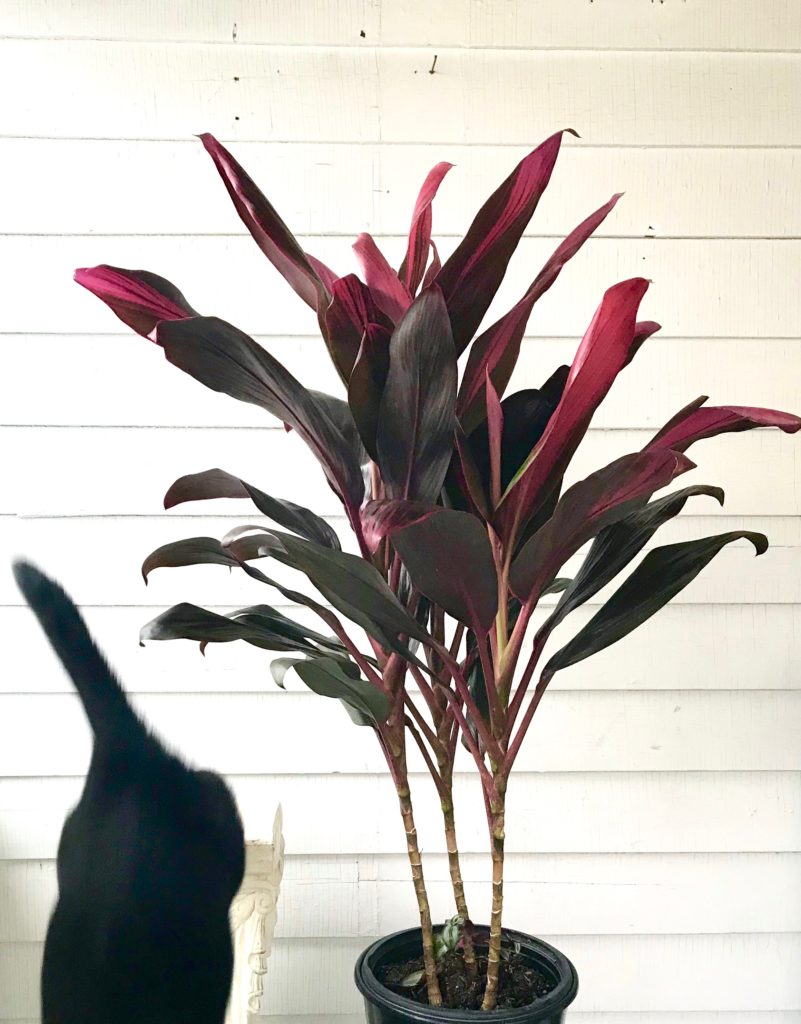
Basic Care
As mentioned above, Hawaiian Ti’s are similar in temperament to Calathea. While I have a love/hate relationship with Calathea, I’m determined to be better about keeping them happy. Right now, all of my Calathea tolerate me and all talk about me behind my back, I’m sure of it. That aside, let’s go over my care tips for Coryline fruticosa that keeps Hugo blushingly beautiful.
Sunlight
Hugo’s care tag says part sun, but bright filtered light is ideal; basically, no harsh sun which will burn the leaves. I have Hugo in a warm room with a west window that gets 8+ hours of sun a day and he’s been happy.
Humidity
Ok, this is where they get finicky, and Calathea-y. Coryline fruticosa need pretty high humidity otherwise they’re leaf tips will turn brown and turn inwards (sound familiar?). I recommend keeping them in a bathroom, a room with a winter humidifier, or on a dish with pebbles and water. Avoid placing them next to a heater, radiator or heavy breathing co-workers.
Watering
After bit of a learning curve, I found Hawaiian Ti like to be kept moist. I may or may not know from experience that if they dry out their bottom leaves get blotchy and sad. Because they tend to be bigger plants, I think a moisture meter could be your bff. At least until you get a feel for when and how often to water.
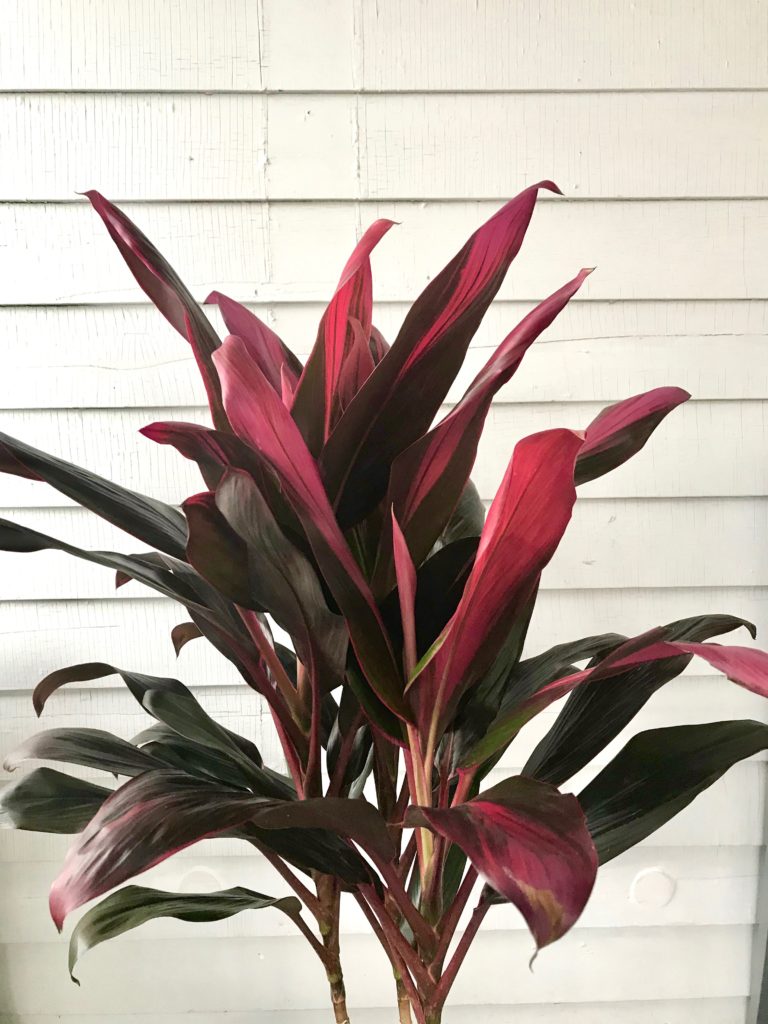
A Few Extra Tips
Be sure to use good water. As I mention, Hawaiian Ti are like Calathea, which mean they are very sensitive to chlorine and fluoride. Using plain tap water could lead to ugly brown leaves so water with rainwater or some that has stood out for 24 hours so the chlorine dissipates.
Think about the soil. Because Hugo was purchased in the winter, I haven’t repotted him yet. The soil he’s in now is ok, but not ideal. Coryline fruticosa prefer well draining soil with orchid bark and perlite for drainage.
Don’t forget to wipe down leaves. For some reason dust particles swarm to Hugo’s leaves and it’s icky. I wipe him and all of my plants down weekly, just using a soft cloth and distilled water (don’t use tap). No leaf shine necessary.
And that’s it! A beginner’s guide to Hawaiian Ti. I’m telling you, they’re going to be the next big thing.
*This post contains affiliate links so I can recommend my favorite products to you.


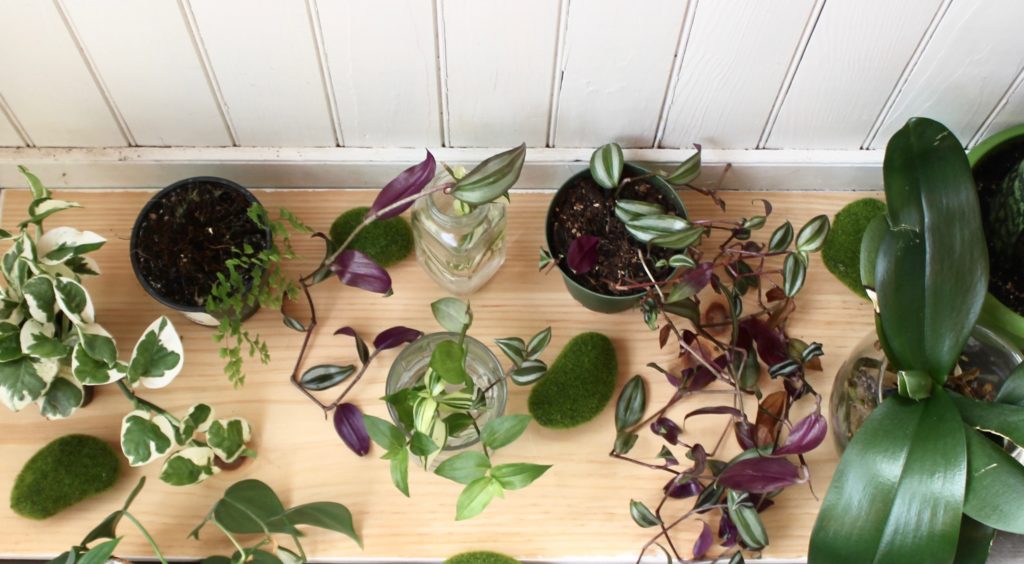
I’m so glad you wrote this! We bought a ti plant today (our first one- ever) and although I was really nervous about it knowing we have a dog at home, my fiancee insisted it would be fine as long as we keep it out of reach. Finding your blog was a source of relief because I’ve been kicking myself all day about this purchase. Hopefully, it will be okay!
Good luck Nicole! And if you ever see bite marks or chewed leaves, that’s a sure sign to relocate the plant.
FINALLY i found out what my plant is…i always thought it was a ppp. but mine didn’t look any pictures posted…mine is just a lovely show stopper… everyone a pc of her, but how do you propogate this plant, tried to take some cuttings ,first tried moss, seemed to be rotting. now in just plain water..still nothing..mine also has tall stalks reaching for the ceiling..any suggestions????
That’s amazing! These can be propagated by taking the small babies that form at the bottom or just chopping the top off (6″ or so) and removing all but three leaves, THEN put in water. Leaving too many leaves causes the plant to focus on producing energy to those leaves and not making roots.
Finally, finally my first Ti Leaf plant since my #1 Son bought my Ti Leaf plant since I had to leave AL MY BELOVED TI PLANTS IN HAWAII.
Found my new Princess Ti Plant at LOWE’S in Eastlake San Diego. The workers didn’t even know they had a whole truck load n the front of the Garden Section. My Ti is largely green with blushes of pink & maroon striations. Hence, she is my Princess Pink Ti Plant.